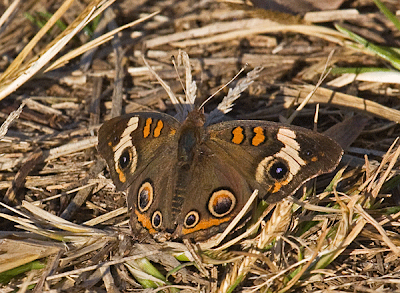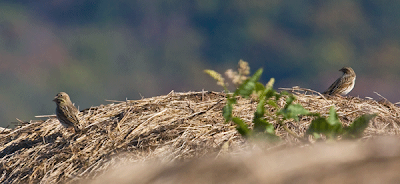
It's not often that I see a coot head on and relatively close up, so I was struck by the knob called a callus at the base of its bill, a curious feature, indeed.

Ducks were plentiful on the river. More than 1,000 mostly sleeping Ruddies, but also Ring-necked, Lesser Scaup, Northern Shoveler, Canvasback, and yes, even a few Redhead ducks, joined the hundreds of Mallards. Did we miss a few species? Probably. Until the Christmas Bird Count to be conducted here on Dec. 20 requires it, scrutinizing every square yard of watery real estate to record the number of every last bird is just too much work on a relaxing day of birding. At least, for me it is.
A walk down Haul Road and a scan of the river at the Belle Haven picnic area on a pleasant, sunny, December day was made more enjoyable by the presence of three fine friends. We didn’t find the over 400 Horned Grebes that were reported just a few days previously, but we did spot a Tree Sparrow in the middle of the trail. This species, seen only in winter in our area, and then only irregularly, is always a kick to find. As distinctive as this species is, with its clear breast marked by a central spot, chestnut crown, strong white wing bars, and two-toned bill, I admit with appropriate humility that we called the bird a Swamp and then a Chipping Sparrow before settling on the correct ID. Below is an inferior digiscoped photo, a “placeholder” until, hopefully, a better one is produced later in the season.

Nothing is more fun than serendipity on such excursions, and a Common Yellowthroat filled the bill this day by chipping first and then providing a few brief glimpses as we peered from the boardwalk into the dried cattails. Late, but hardly a record-setting date for this species, Common Yellowthroats are usually seen on CBCs in the coastal plain.
Otherwise, it was the usual early winter fare, with this active Ruby-crowned Kinglet entertaining from low branches along the trail on the stretch through the forested area.


















































